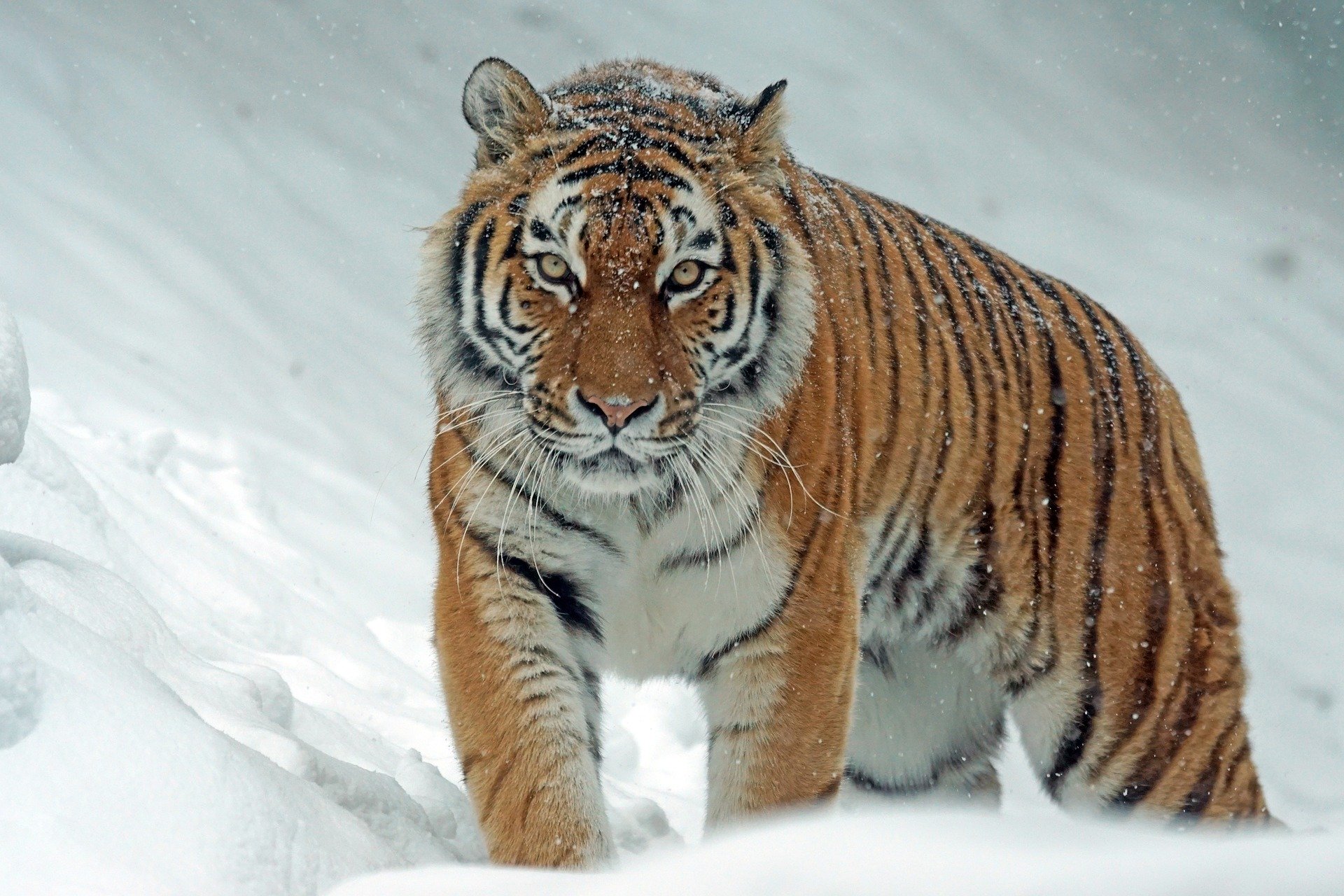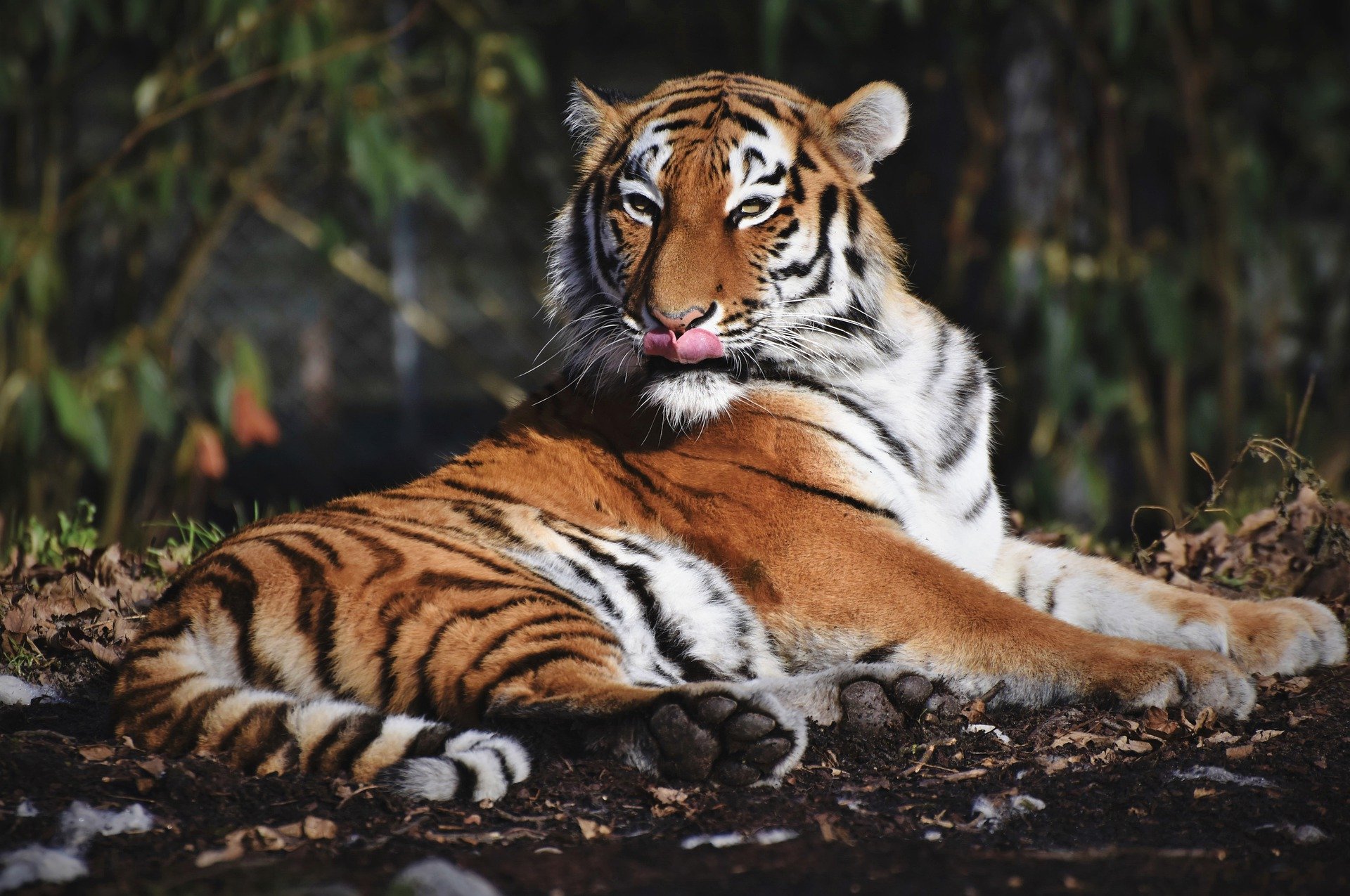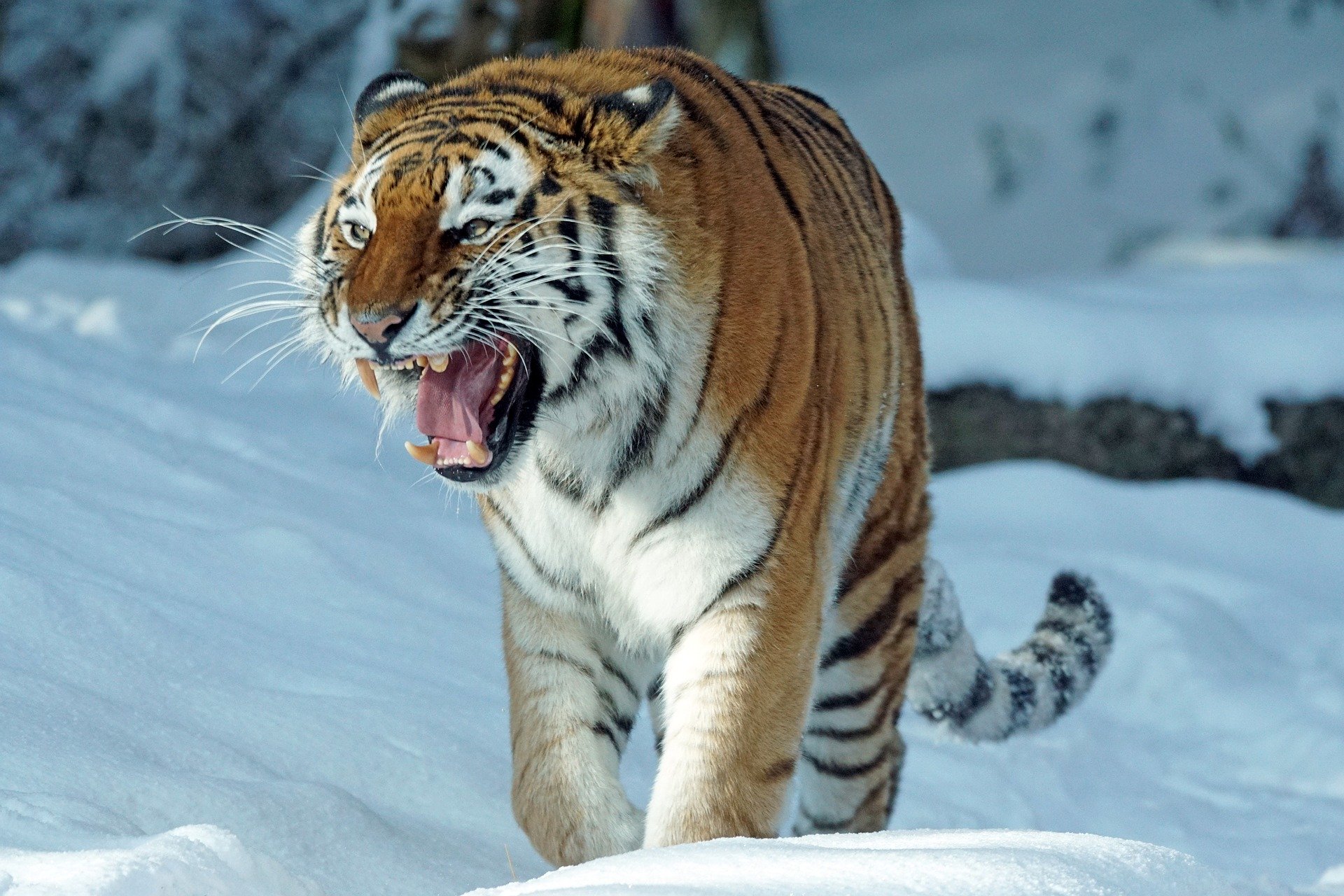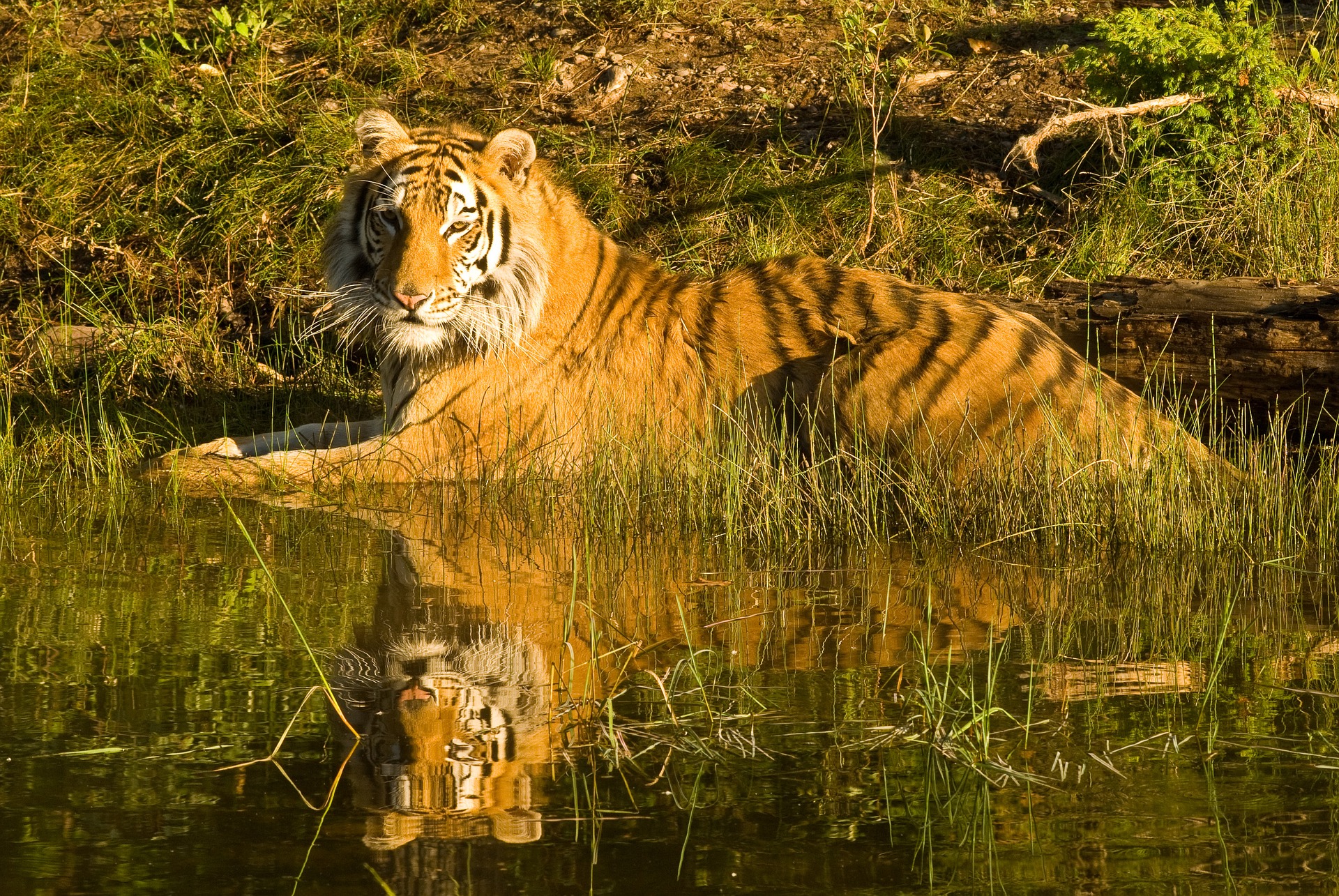
Characterized for being the largest tiger that currently exists, the Siberian tiger is one of the species that is in danger of extinction due to their hunting, climate change and loss of their natural habitat.
Learn more about what the Amur tiger is like, where it lives, how it reproduces and other information that will bring you closer to this feline.
Characteristics of the Siberian tiger
The Siberian tiger has many other names by which it is known: Amur tiger, Siberian tiger or, its scientific name, panthera tigris altaica. It is a feline that exceeds the Bengal tiger by 10 centimeters and is positioned as the largest that exists in the world today.
It measures between 1,90 and 2,30 meters only from head to trunk, and its tail can reach a meter in length. In addition, it is quite tall, with a length between 99 and 107 centimeters.
Its weight is around 320 kilos, although there are much heavier (and larger) specimens. In the case of the female, she is usually smaller and less heavy than the male.
[related url=»https://infoanimales.net/tigres/white-tiger/»]
They have quite dense fur and are adapted to the habitat where they live, so they protect themselves with a layer of fat to avoid feeling the cold on their bodies. As for the coat, it is usually a paler color than usual, and has fewer dark stripes. Their fur is usually yellow or reddish-orange and the stripes are dark brown to black. The part of the chest, the belly and the inner part of the legs are white.
He is quite fast when it comes to running, being able to reach 90 km/h when he has to chase, although he cannot maintain speed for long.
How it behaves

The Amur tiger is characterized by being solitary and territorial. In fact, it tends to mark its territory on trees and rocks that belong to it, either rubbing against them to impregnate them with its scent, clawing or biting to leave a mark, or even urinating.
Living in a large area, but with little food, there are usually fights between the specimens. It is known that this cat is one of the strongest and most powerful, as well as fierce. He doesn't like contact with people, but he can get close to populations if he can't hunt normally because for him the human being is much easier to attack (even when he's sick or has an injury).
What is the difference between the Bengal tiger and the Siberian tiger
There are several differences that make it easy to tell a Bengal tiger from a Siberian tiger. The first of these is the habitat where they reside. The Amur tiger prefers the cold, mountainous areas, with snow, etc. Instead, that of Bengal opts more for hot, humid climates and yes, also cold, but to a lesser extent.
[related url=»https://infoanimales.net/tigres/bengal-tiger/»]
Another difference is in the length of their physique. The Siberian tiger is much longer than the other. In terms of weight, it would also be, but due to the fact that the Siberian tiger's diet is scarce, the Bengal tiger may weigh more.
Finally, the fur of the Amur tiger is longer (long, thick, etc.) than that of the Bengal tiger.
Where do you live
The Siberian tiger is mainly concentrated in the Asian continent. However, within it, there are two large populations: on the one hand, 95% of the Amur tiger is found in the mountainous area of Russia, specifically in the Sikhote Alin mountains; on the other hand, the remaining 5% is located in the China area.
In the past, when there were a large number of specimens, they could be found in Mongolia, Korea, Manchuria... but the disappearance of so many tigers has made them concentrate only in those two areas that are currently monitored. Thus, they try to increase their number and not face the dangers that would cause the extinction of the Siberian tiger.
It likes to live in high areas, either in boreal forests or in taigas and they are not too worried about the cold because they are adapted to low temperatures and thus feel more protected, although when hunting, due to the few prey they find, they must travel long distances to find food.
What does the Siberian tiger eat?

The Siberian tiger is a carnivorous mammal. It feeds on many other animals that it hunts, such as elk, deer, hares and rabbits, roe deer, wolves, lynx or even Amur leopards. On occasion, it is also capable of hunting bears or fishing for salmon.
To do this, you can travel long distances in order to find their food. It hunts at night especially, which is when it has the greatest advantage and its fur does not give it away, although it also occurs in the early hours of the morning. What it does is approach the prey as stealthily as possible and attack from behind or on the side by jumping and biting or giving a clawing blow that prevents the other animal from escaping from it.
How the Amur tiger reproduces
The Siberian tiger reaches sexual maturity at four years. It is from that moment when it can reproduce at any time of the year. When that happens, the female leaves scent marks (urine) or scratches on the trees to let the male know that she is open to breeding.
For about a week the male and female live together and mate. However, once that time has elapsed, the male moves away and does not return, so it is the female who must take care of the young and her own food. The gestation of a Siberian tiger is about three months or three and a half months. Gives birth to between two and four young, all of them blind for 10-15 days. On occasion they can have up to six pups, but it is not usual, and if it does happen, one of them often dies.
The puppies will be protected in caves or areas that provide security since the mother will have to leave them alone to be able to feed. During 18 months they will depend exclusively on the mother but, from that age, they will join the hunt.
When the Amur tiger is 2-3 years old, if it is a male it will move away from its mother looking for its own territory, but away from it. However, in the case of the female, he can stay longer with the mother and will settle in an area close to her progenitor.
How many Amur tigers are there in the world

According to data from 2019, there are currently 500 specimens of Amur tiger, a number that is still too low. Climate change, the loss of their natural habitat, as well as the exposure they have when being hunted by man has been reducing the population of this animal to the point of leaving it almost extinct.
In addition, it must be taken into account that it is only located on the Asian continent, and, within it, in the mountainous area of Russia, which means that, if these specimens are lost, the breed would be almost completely extinct.